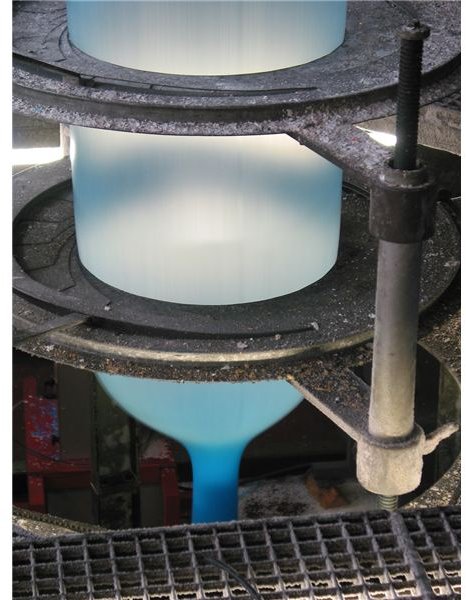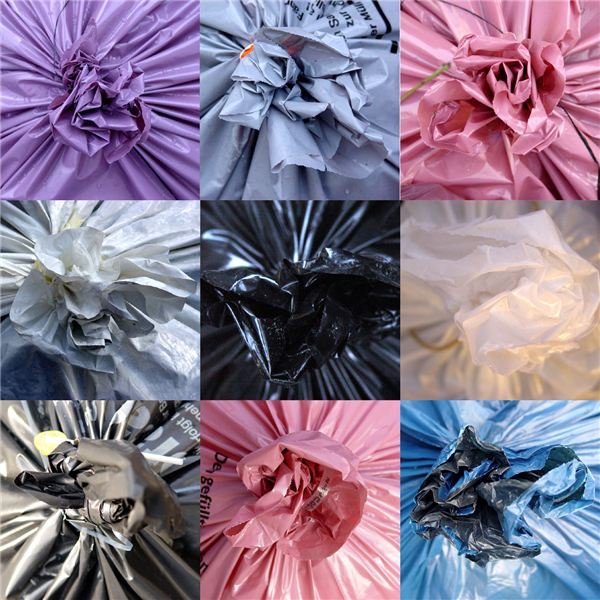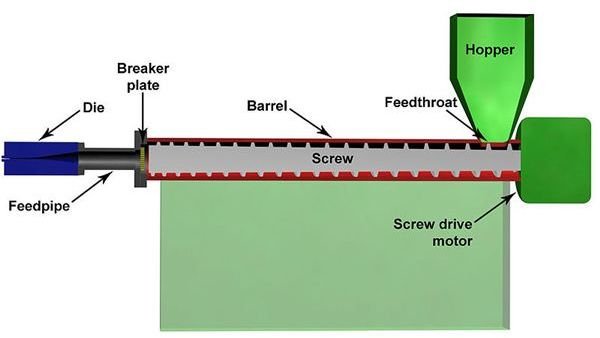How are Plastic Shopping Bags Made?
Plastic shopping bags are a ubiquitous presence at shopping malls, grocery stores, and just about every other place of business. But despite all their proliferation, most people don’t know much about plastic bags. How are plastic shopping bags made? What are plastic bags made out of? What are some statistics about plastic shopping bags? The answer to these questions and more are found herein, dear reader.
How Are Plastic Shopping Bags Made?
Almost all plastic shopping bags are made out of polyethylene, a petroleum-derived polymer. Two different types of polyethylene are in use today: low density and high density, with high density polyethylene being the most common.
The process used to manufacture plastic shopping bags is called blown film extrusion. First, polyethylene beads (or resin) are loaded into a hopper, which deposits resin into the barrel, which also contains a screw. As the screw motor turns the screw, the resin is pushed at a regular rate through the barrel. The barrel is heated, which causes the plastic beads to melt into the desired state. In addition, high levels of pressure and friction in the barrel contribute to resin melting.
Image: Wikimedia Commons - Extruder Section
At the barrel’s end, a screen pack (typically reinforced with a breaker plate due to high pressures) is employed to screen out any unwanted contaminants. Next, the molten polymer passes into the die, which in this case is an upward-oriented cylinder. Two nip rolls are placed high above the die and pull the plastic up at a controlled speed. Depending on the speed of spooling, different bag thicknesses can be achieved. An air ring is positioned around the outside profile of the die, and serves to cool the plastic film. In addition, the center of the die contains a nozzle which blows air into the plastic film, creating a bubble. This process blows up the plastic film; the ratio of the new size to the die diameter is known as the “blow-up ratio.” Finally, the nip rolls compress the film back into a double-walled film, and the film is stored. Once the film is cooled, it can be further processed into bags, with logos or handles as required.

Image: Wikimedia Commons - Film Extrusion
Statistics on the Use of Plastic Bags in the United States
The first plastic bag was invented by a Swede named Sten Gustaf Thulin for the company Celloplast. Celloplast applied for and received a patent for the creation in 1965. Plastic bags didn’t enter widespread use until much later, however. It wasn’t until 1982 that a major US grocery chain - Kroger - adopted plastic shopping bags. Safeway soon followed suit, and plastic bags quickly became extremely popular.
How many plastic bags are used each year?
According to the United States International Trade Commission, a total of 102 billion plastic bags were used in the US in 2009 alone. Some environmental groups claim a total worldwide use of up to one trillion bags per year.

Image: Wikimedia Commons - Plastic Flowers
How many plastic bags are recycled?
Although all plastic bags can be recycled, the recycling rates are fairly low. In the US, only 7% of plastic bags are recycled, although many more are likely used as garbage pail liners or reusable bags.
What are plastic bags made of?
William F. Carroll, the president of the American Chemical Society, says, “With the possible exception of a little lubricant to help in extrusion, plastic bags are pretty much just the native polymer.” Small amounts of pigments are used to color bags.
Basic Plastic Bags Facts
The average plastic bag weighs about 5 grams and can support 17 pounds. Although plastic bags can take thousands of years to degrade if disposed of incorrectly, they have their environmental benefits as well. They create 80% less waste than paper bags, only half of the greenhouse gases, and require about 4% of the water used for paper bags.
